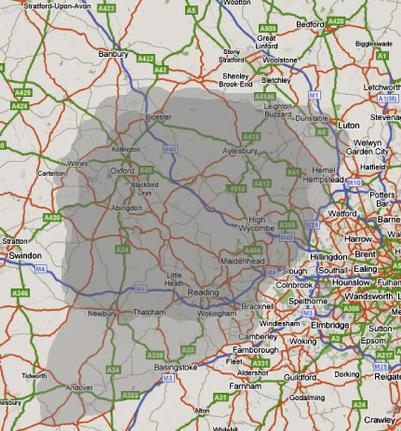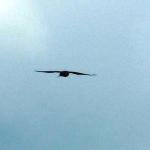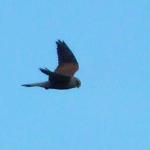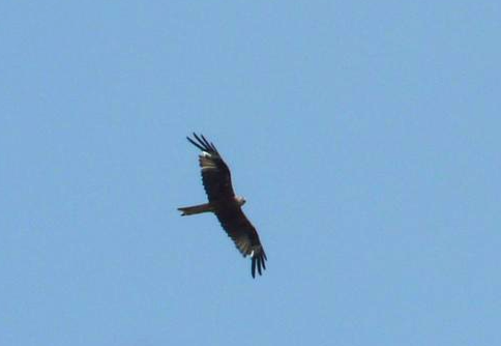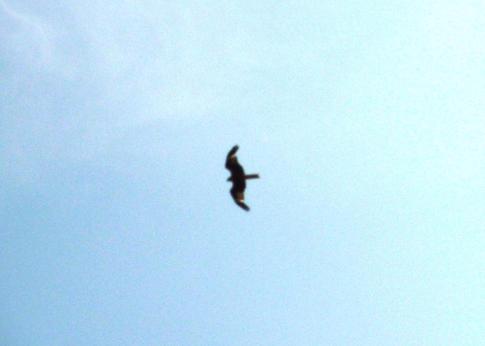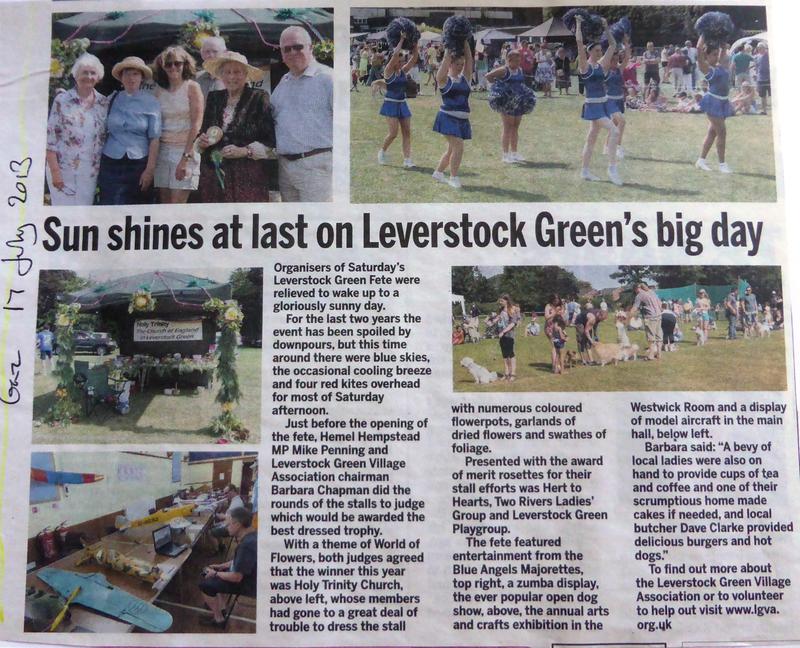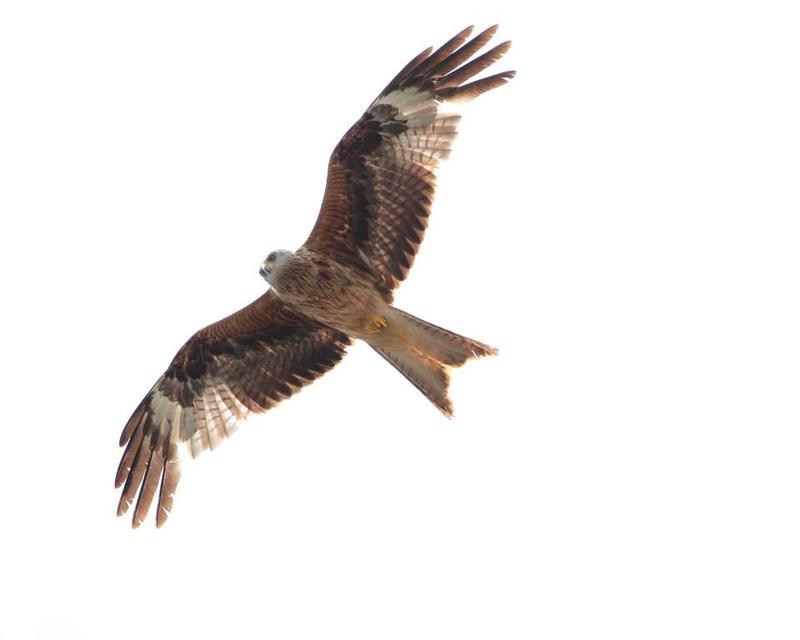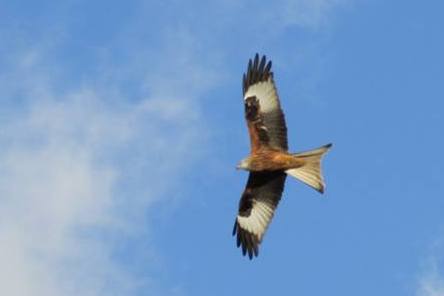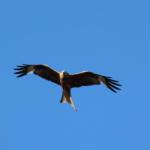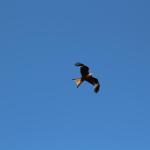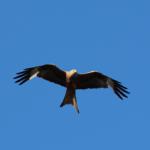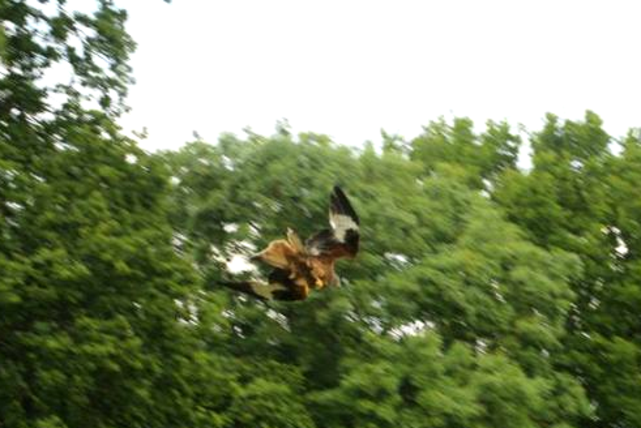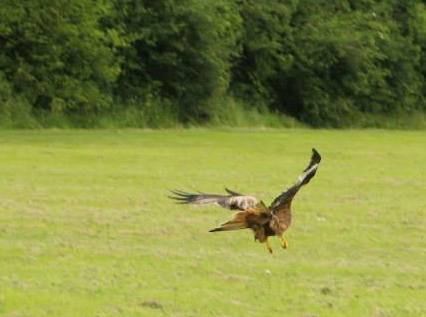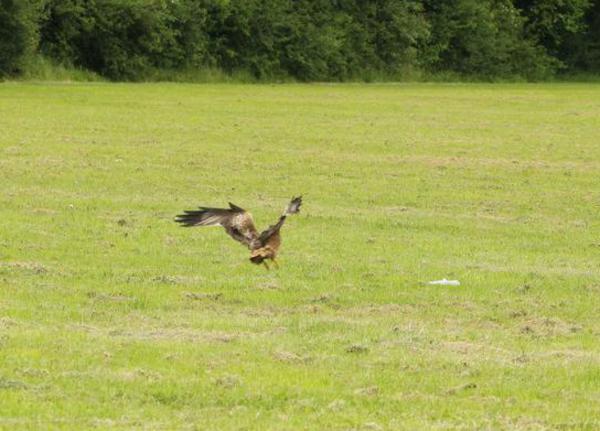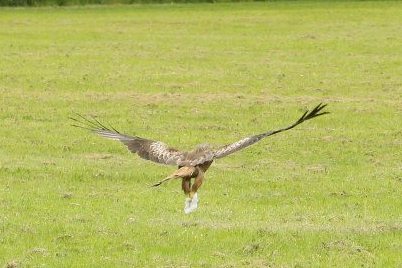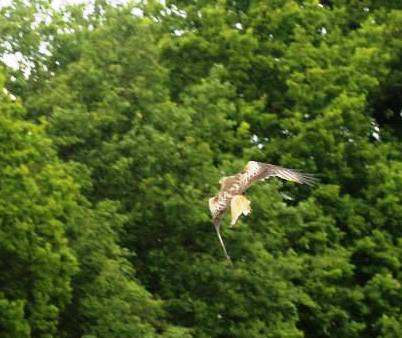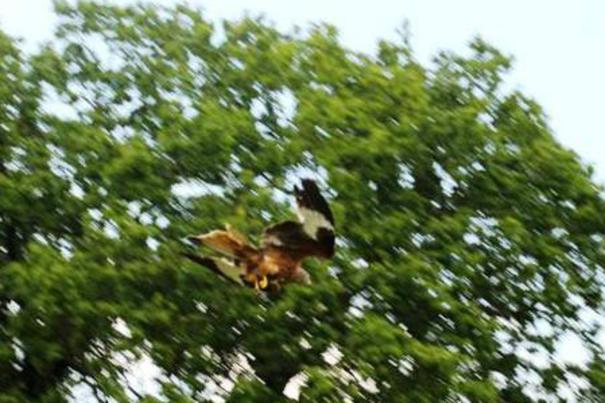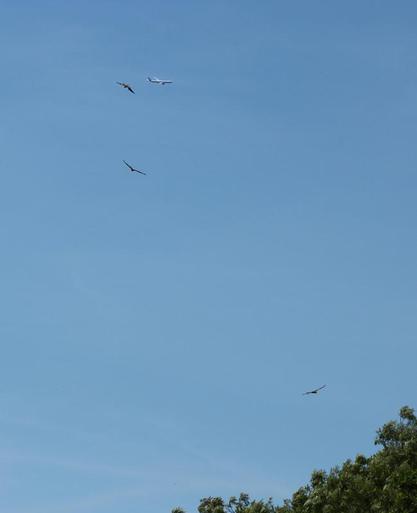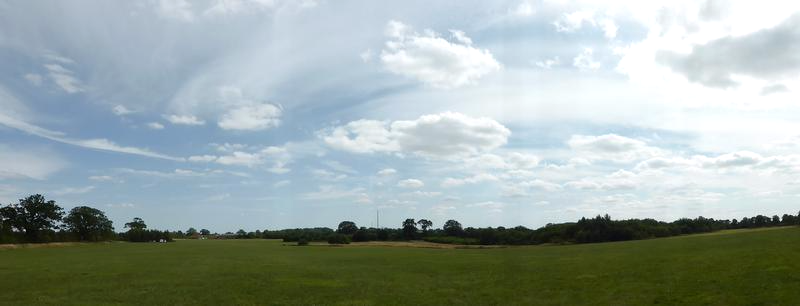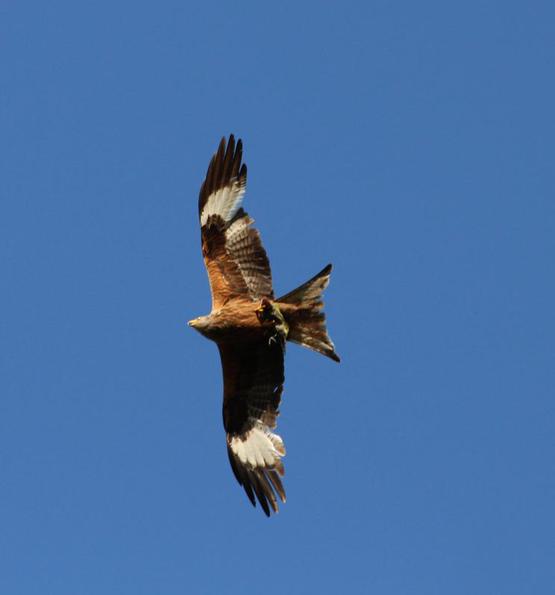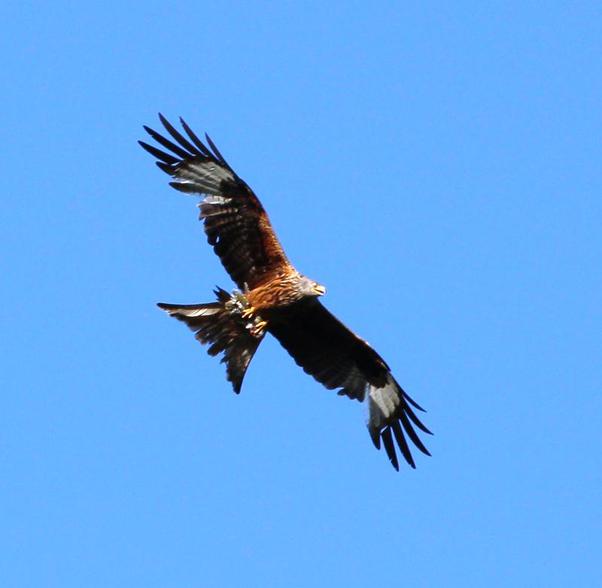RED KITES OVER THE GREEN
This page was last updated on: July 14, 2015
THE LEVERSTOCK GREEN CHRONICLE
an in-depth history of one village in Hertfordshire UK.
Click to link to principle LG Chronicle web pages.
NB I changed the title of the page as the Southern England Kite Group already had an article with the old title.
KITES ARE A SCHEDULE I BIRD.
Kites are fully protected under the 1981 Wildlife and Countryside Act.
It is an offence to intentionally disturb red kites on or near their nest site, and they are especially sensitive to human disturbance during the early period of the nesting season.
From about 2007, the magnificent Red Kite has been seen in slowly increasing numbers in the skies above the village, so that by the time of writing this in July 2015, many of us are now so familiar with the silhouette and flight pattern of these magnificent raptors that we can recognise them immediately they appear, even without a glimpse of their iconic forked tail.
These pictures being a case in point and taken in our garden the end June 2015.
NB Unless otherwise stated, photographs are mine and therefore copyright Barbara Chapman
Photograph
©Barbara Le Tallec
I recognised it as a kite instantly and took a series of pictures as it wheeled around not quite overhead. When cropped down and enlarged, with its tail becoming obvious, I was then able to confirm it was indeed a kite.
Red Kites had become extinct in England as a result largely of persecution during the 19th century; but due to an amazing reintroduction programme in The Chilterns between 1989 and 1994, their numbers in the area shown on this map now exceed 1000 breeding pairs, and chicks from the Chilterns have been taken from the Chilterns to reintroduction sites in other parts of the country. Leverstock Green is on the very edge of their breeding grounds at present as can be seen from this map.
(Taken from the website of the Southern England Kite Organisation with their permission.)
*
* Leverstock Green
Kites are not the first birds of prey to be seen in and around Leverstock Green. Over the past 33 years I have frequently seen Kestrels, Buzzards and the occasional Sparrow Hawk, and mostly from out of my windows or from the garden. For many years we regularly had at least one Kestrel who hunted in the wild area opposite (part of the playing fields belonging to Hobbs Hill Wood Primary School). It could be seen hovering over the field and occasionally stooping for its prey. On several occasions it would come and perch n the street light immediately outside our house and I have succeeded in taking its photograph on several occasions, though none of them were really A1 photos as more often than not it was too far away, or I would just get the camera focussed and they would fly off!
In early April 2007 The Hemel Hempstead Gazette made headlines with stories about Kites over Hemel, including the report from Kitty who lived at Bennetts End concerning a Red Kite which had apparently been “eying up” her pet rabbit. Another Bennetts End resident Chris Wales sent in a photograph taken by her son of a Red Kite being mobbed by crows over Bennetts End. It was at about this time that I can myself remember seeing a Kite being mobbed by other birds whilst looking out of my lounge window. We live in Leverstock Green, but the Bennetts End shops are only at the end of our road. I tried to photograph this but the birds were too fast for my camera at the time!
Over the next five years sightings of Kites were fairly frequent. Usually one on its own, or occasionally two or even four. They would circle over the area generally and occasionally be mobbed by other birds, especially in the mating season. Yet the earliest photograph of a Red Kite over the village that I am at the present time aware of, are the pictures I took myself at the Village Fete on 12 July 2013 when there were no fewer than four kites circling over the village during the afternoon.
Many of the pictures I took were simply not worth keeping as the birds were too high and were therefore out of focus, but I did manage these pictures, though they are not especially good. (Mind you I was at that time using my previous digital camera which had nothing like the scope of my present camera’s zoom lens.) ©BAC
Click the individual photos to see them enlarged.
Click the individual photos to see them enlarged.
Since that date two friends, Barbara Le Tallec and Roy Platten have taken some much better photographs of the Kites who frequent the skies above Leverstock Green.
The following two photographs were taken by Barbara Le Tallec in June 2014. (Having just uploaded the photograph on the left, I can now identify this particular bird as one we have frequently seen and photographed this year (2015) as his/her central tail feathers are very distinctive.
© Barbara Le Tallec
As an aside, as I write this article at 16:15 on 25 June 2015, something caught my eye, and I looked up out of the window to see a couple of Kites circling over the field opposite our house. [Needless to say by the time I had the camera out they had flown out of sight!]
On the same day two years earlier, 25 July 2013, Roy Platten succeeded in taking a set of lovely photos, some of which I have included here and again have cropped down from the original.
Photographs © Roy Platten
Click the individual photos to see them enlarged.
Back to this year (2015) on 8 June, Barbara LeTallec took some stunning photographs whilst walking in Bunkers Park, our local public open space.
This is what she said about them: “Out of the blue it swooped down right in front of me, so a bit blurred - never mind. Then another appeared right over my head. Must be the week for them! – at Bunkers Park.”
It is not terribly obvious what this Kite had swooped down on – though obviously it was the white object shown on the ground in the previous photos. This does not look like a small animal to me, but perhaps a drinks bottle, or some kind of rubbish, handkerchief or toy inadvertently dropped by a passer by in the park. In “Red Kites in the Chilterns” it states that kites are notorious for lining their nests with all kinds of “rubbish” and other items. (Sheep’s wool, small soft toys, feathers etc.) If that is the case in this instance then it suggests the kite was nesting fairly close by. Here are the rest of the sequence of pictures which Barbara Le Tallec managed to capture that day.
Photographs © Barbara Le Tallec
Photographs © Barbara Le Tallec
Photographs © Barbara Le Tallec
Photographs © Barbara Le Tallec
The three of us, and no doubt other residents of Leverstock Green will continue to look out for and try to photograph these large and truly magnificent birds. If anyone should establish where they are nesting in this area either this year or in future years; or succeed in taking photographs showing either young birds, or 2 or more Kites in the same picture (taken in Leverstock Green ) then please do email me or if you don’t have my email address then contact me via the Contact Form.
Roy told me recently:
“I was at Leverstock Green School today and three Red Kites were flying very low for about an hour (12.00 – 1.00). You won't be able to get access to the school during the day but if you fancy seeing them up close I suggest visiting Westwick Fields close to the Curtis Road alleyway around lunchtime as it seems to be their favourite time of day to turn up. Even above the sound of screamming children at lunch you can hear their call too. Magnificent creatures.”
Barbara Chapman, 11 July 2015
BUNKERS PARK 3 JULY 2015 - PHOTOGRAPHS BY BARBARA LeTALLEC
N.B. All these photographs were taken showing the Kites over Bunkers Park Open Space. Above the contractor mows the grass for hay. A few of the photographs were taken from Barbara's garden close-by.
This particular Kite is quite distinctive; it looks as if he/she has lost one or more tail feathers, and compared to the photographs taken of this kite 2 years previously, there is now a larger chunk missing from its tail. Because this Kite is so distinctive I have called him/her "Clipped-Tail" or CT for short.
Photographs © Barbara Le Tallec
Click the individual photos to see them enlarged.
Photographs © Barbara Le Tallec
Barbara was fortunate enough to see three Kites over Bunkers Park at the same time (+ a plane!), that afternoon, and that she also saw a Buzzard and a crow, neither of whom were too happy with the Kites being there! In the double photo immediatly above the bottom of the two kites has grass from the field dangling from its claws, which it had taken from the earlier mown grass.
We are very fortunate to have Bunkers Park on our doorsteps. Its an amazing broad piece of open countryside which we can all enjoy. The panorama I took earlier today gives a feel of the wide open space which both local residents, their pets and the local wildlife can take full advantage of. Click here for a plan of the open space.
PHOTOGRAPHS
I am indebted principally to Roy Platten and Barbara Le Tallec for the truly magnificent photographs which they allowed me to use in this article.
Photos will be marked to show who owns the copyright, please do not copy these pictures without obtaining their permission. NB Colour of text may vary dependant on background. If abbreviations are used, please note:
©RP = Roy Platten; ©BLeT = Barbara Le Tallec and ©BAC = Barbara Chapman
BIBLIOGRAPHY AND PRINCIPLE WEB-LINKS OF INTEREST.
(NB I have yet to connect the links to the following URLs. However, until the link is established you can still copy the URL and paste it in your browser.)
Red Kites in the Chilterns, by Ian Carter and Gerry Whitlow. This is available from this URL http://www.chilternsaonb.org/Products/2/20/Red-Kites-in-the-Chilterns.html
Gerry Whitlow's website (contains some really lovely Red Kite photos including showing them nesting): www.hyelms.com
http://www.sekg.org.uk/rootfolder%20SEKG/sekgsighting.html - URL of the map shown at the beginning of this article.
http://www.sekg.org.uk/index.html - Southern England Kite Group
http://www.chilternsaonb.org/about-chilterns/red-kites.html
http://www.redkites.net/
http://www.chilternsaonb.org/uploads/files/Walks_and_Rides/Red_Kite_Walks.pdf
http://www.lgchronicle.net/Bunkers.html Bunkers Park Information
http://www.nashmillsparishcouncil.gov.uk/bunkers-park.html - Nash Mills Parish Council/Bunkers Park
http://www.gohemel.co.uk/community/bunkers-lane-open-space/
http://www.rspb.org.uk/news/313401-police-appeal-after-red-kites-illegally-poisoned-in-the-chilterns RSPB appeal following illegal poisoning of Red Kites in the Chilterns
http://www.rspb.org.uk/groups/stalbans/places/235699/ RSPB St Albans Group
Click pdf file above to download
plan of Bunkers Park
Click pdf file above to download
plan of Bunkers Park
On 9 July Barbara Le Tallec once again captured some interesting photographs featuring the bird which is possibly CT's mate. This time he/she was flying off with a Green Woodpecker in his/her talons. It was more than likely already dead when the Red Kite claimed it, as they are principally scavengers. But as I am almost certain they have a nest nearby and no doubt at least one ravenous chick, they may have on this occasion gone for a live capture.
Click the individual photos to see them enlarged.
Photographs © Barbara Le Tallec
Postscript 13 July 2015
Having enquired from Gerry Whitlow (see links below) about the home range of the Red Kites, and after he had looked at this site, I received this reply:
"They generally stay quite close to their home range. I guess around a mile most of the time. They roost in woods overnight which can be some distance away but are usually back just after dawn.
They also travel large distances occasionally, possibly for food. I tagged Chiltern bird travelled to Yorkshire in one day a few years ago"
They moult every year and tend to lose feathers in symmetrical pairs so expect to see the feathers regrow on its tail sometime.
POSTSCRIPTS

